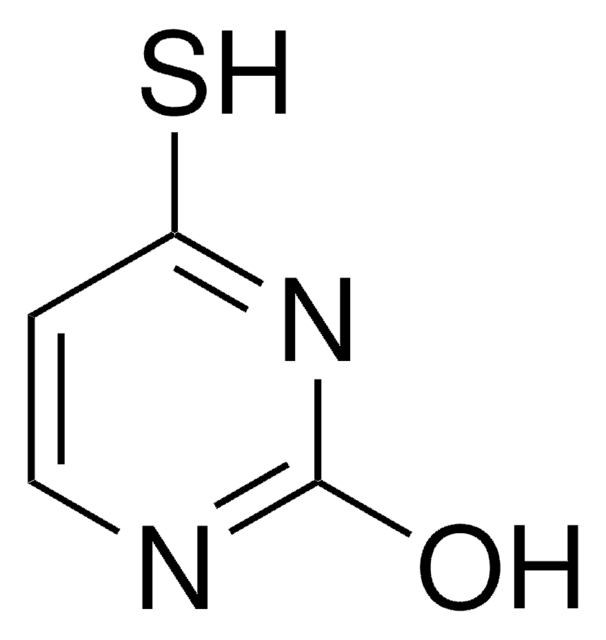V900333
2-Thiouracil
Vetec™, reagent grade, 99%
Synonym(s):
4-Hydroxy-2-mercaptopyrimidine
About This Item
Recommended Products
biological source
synthetic
grade
reagent grade
product line
Vetec™
Assay
99%
form
powder
mp
>300 °C (lit.)
solubility
1 M NaOH: 50 mg/mL, clear to very slightly hazy, colorless to faintly yellow
SMILES string
O=C1NC(=S)NC=C1
InChI
1S/C4H4N2OS/c7-3-1-2-5-4(8)6-3/h1-2H,(H2,5,6,7,8)
InChI key
ZEMGGZBWXRYJHK-UHFFFAOYSA-N
Looking for similar products? Visit Product Comparison Guide
Legal Information
Certificates of Analysis (COA)
Search for Certificates of Analysis (COA) by entering the products Lot/Batch Number. Lot and Batch Numbers can be found on a product’s label following the words ‘Lot’ or ‘Batch’.
Already Own This Product?
Find documentation for the products that you have recently purchased in the Document Library.
Our team of scientists has experience in all areas of research including Life Science, Material Science, Chemical Synthesis, Chromatography, Analytical and many others.
Contact Technical Service









